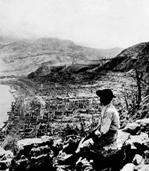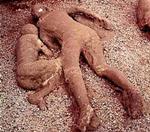How do pyroclastic flows work?
This short video shows a simple density flow demonstrated using a plastic aquarium and a slurry of builders’ plaster. It is easily reproduced in the laboratory.
Note: Builders’ plaster sets hard – best to clean up asap! Clay can be used but will cloud the water and obscure subsequent flows.
This demonstration illustrates two important geological processes: turbidity currents on the sea floor, and pyroclastic flows from volcanoes. Both processes rely on the fact that a mixture of solid particles (sediment or volcanic ash) and a fluid (water or volcanic gases) will form a flow capable of moving down slopes at high speeds.
Note: Builders’ plaster sets hard – best to clean up asap! Clay can be used but will cloud the water and obscure subsequent flows.
This demonstration illustrates two important geological processes: turbidity currents on the sea floor, and pyroclastic flows from volcanoes. Both processes rely on the fact that a mixture of solid particles (sediment or volcanic ash) and a fluid (water or volcanic gases) will form a flow capable of moving down slopes at high speeds.
 When a pyroclastic flow from Mont Pelee, Martinique, obliterated the town of Saint Pierre in 1902, over 25,000 people were killed in a matter of seconds – the only survivor being a prisoner awaiting execution for murder in the dungeon of the town jail!
When a pyroclastic flow from Mont Pelee, Martinique, obliterated the town of Saint Pierre in 1902, over 25,000 people were killed in a matter of seconds – the only survivor being a prisoner awaiting execution for murder in the dungeon of the town jail!Such mixtures of hot volcanic gases, ash and volcanic debris can flow downhill at spectacular speed (over 100 mph), they can also flow over obstacles such as low hills that lie in their way.
 In recent years, studies have shown that pyroclastic flows were also responsible for the deaths of citizens of the Roman cities of Pompeii and Herculaneum in 79 AD.
In recent years, studies have shown that pyroclastic flows were also responsible for the deaths of citizens of the Roman cities of Pompeii and Herculaneum in 79 AD. Pyroclastic flows are a much-feared volcanic hazard, notoriously difficult to study whilst remaining alive to tell the tale!

